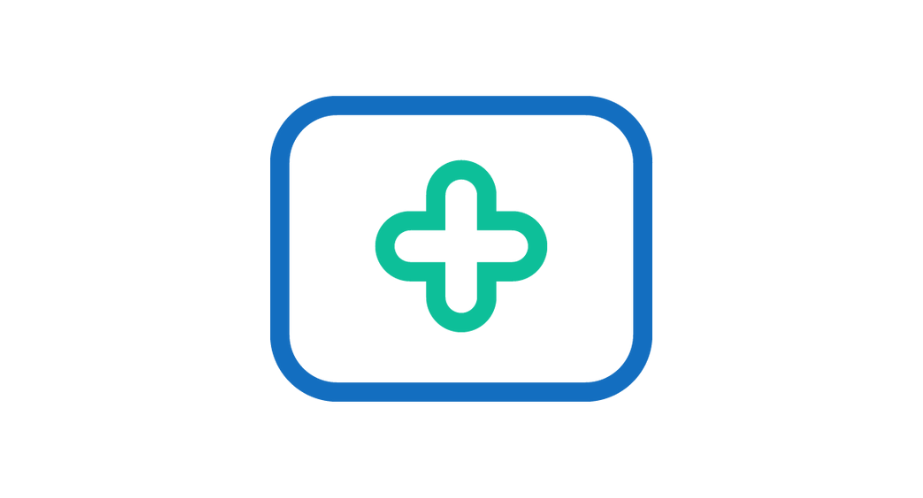The timely and secure transportation of medical supplies is vitally important for ensuring patient well-being and the efficacy of medical care. Whether lifesaving medications, diagnostic machines, or surgical tools, the smooth flow of these essential provisions is pivotal for clinics to run effectively.
Importance of Delivering Medical Supplies Promptly and Securely
Prompt delivery of medical supplies represents far more than mere convenience; it can denote the difference between life and death. Patients rely on expeditious access to treatments, equipment, and other vital provisions to manage their conditions and receive needed care. For example, a delay in transporting insulin to a diabetic individual could lead to serious health complications, whereas the timely delivery of surgical instruments is essential for carrying out lifesaving operations in operating rooms. Furthermore, in emergency situations like natural disasters or disease outbreaks, the swift transportation of medical supplies can prove instrumental in offering urgent care and mitigating further harm.
Moreover, ensuring the security of medical supply delivery is paramount to safeguarding patient health and maintaining the integrity of healthcare systems. With the rising prevalence of counterfeit drugs and medical devices, as well as the risk of theft or tampering during transit, healthcare providers must implement stringent security measures to protect the authenticity and safety of transported provisions. Failure to do so not only jeopardize patient safety but also undermines trust in the healthcare system as a whole.
Challenges Involved in Medical Supply Delivery
Despite the urgent importance of timely and secure medical supply delivery, healthcare providers and logistics companies face myriad intricacies in ensuring smooth operations. These intricacies include navigating complex regulatory requirements and compliance standards, managing temperature-sensitive medications and equipment, addressing security concerns such as theft and tampering, and overcoming logistical hurdles in delivering supplies to remote or underserved areas. Additionally, with the growing demand for healthcare services and the increasing globalization of medical supply chains, the pressure to streamline delivery processes and enhance efficiency has never been greater. In the subsequent sections of this blog, we will delve deeper into these intricacies and explore innovative solutions to address them, ultimately aiming to improve the safety and swiftness of medical supply delivery in healthcare settings.
The Pivotal Role of Medical Supply Transportation
In healthcare’s intricate web, the timely and smooth transportation of medical supplies forms a foundation, shaping patient care quality and treatment effectiveness. This section explores further medical supply transportation’s critical part, emphasizing its importance for healthcare systems’ seamless function.
The Value of Speedy Delivery in Clinical Settings
Speedy medical supply delivery matters not merely for logistics but patient care itself. Doctors rely on a steady flow of supplies to diagnose, treat, and perform life-saving procedures. Each part of care links intricately to essential supplies’ availability, from tools to drugs. Timely delivery ensures facilities meet patients’ evolving needs, preventing treatment disruptions and minimizing adverse outcomes. Moreover, in emergencies like disasters or outbreaks, quick delivery becomes even more critical, as it can mean the difference between life and death for those affected.
Delayed or Mishandled Shipments’ Impact on Patient Care
Consequences of delayed or damaged shipments echo throughout the system, directly impacting care and results. When supplies arrive late or get compromised in transit, providers may face shortages, forcing rationing or suboptimal alternatives. This compromises quality and strains professionals navigating challenges while ensuring safety. Furthermore, delays disrupt scheduled procedures, increasing wait times and risks in treatment plans. In time-sensitive cases involving medications or interventions, such delays can gravely endanger health and well-being.
Examples of Crucial Supplies Needing Swift Transportation
Many supplies necessitate speedy transportation to meet patients’ and providers’ urgent needs. For instance, perishable drugs like insulin and vaccines require timely replenishment to maintain potency and effectiveness. Emergency equipment such as defibrillators and ventilators must remain readily available in critical situations. Diagnostic tools like imaging scanners and lab kits also rely on timely delivery to facilitate prompt diagnoses and decisions. By ensuring crucial supplies’ quick transportation, providers can optimize care delivery and enhance outcomes.
Comprehending Complications
Navigating the intricate landscape of administrative necessities and conformity baselines is an intimidating errand for stakeholders engaged in clinical inventory transportation. From licensing and allows to quality assurance and documentation, healthcare facilities and transport companies must abide by a myriad of rules imposed by government agencies and industry bodies. Failure to conform to these demands can result in severe penalties, like fines, sanctions, and lawful repercussions. Furthermore, the constantly evolving nature of regulatory frameworks adds another layer of complexity, requiring constant vigilance and adaptability to remain compliant in an ever-changing environment.
Temperature-Aware Medications and Apparatus
Many clinical materials, particularly medications and diagnostic tools, are highly sensitive to temperature fluctuations. Maintaining the integrity of these temperature-aware items throughout the transportation method presents a considerable difficulty for healthcare facilities and transport companies. Exposure to extreme temperatures can compromise the efficacy and safety of medications, rendering them ineffective or even dangerous to patients. Consequently, specialized packaging, transportation, and storage solutions are essential to ensure that temperature-aware products remain within the optimal temperature range during transit. This necessitates the execution of stringent temperature observation and control measures, as well as the usage of insulated containers and refrigerated vehicles to safeguard the integrity of clinical materials.
Security Issues and Theft Deterrence
Security concerns regarding medical supply delivery loom large, with threats of theft, tampering, and diversion posing risks to integrity and safety. Pharmaceuticals especially attract illicit interest due to resale potential on black markets. Providers and logistics firms must implement robust protections against theft and unauthorized access throughout the process. This incorporates GPS tracking, tamper-evident packaging, and secure storage to deter theft and mitigate diversion risk.
Logistical challenges abound in medical delivery, encompassing route optimization, urban “last mile” issues, and remote rural access. Crowded urban traffic, scarce parking, and location limits introduce difficulties. Isolated rural terrain, distances, and sparse populations bring their own hurdles. Serving remote, underserved regions demands planning and coordination to conquer obstacles while ensuring timely essential care. This possibly involves optimization software and local coordination to identify alternate methods and streamline efficiency.


Transformations in Healthcare Supply Transportation
As the healthcare landscape continues evolving, technologies and innovations driving medical supply transportation advance as well. This section explores cutting-edge solutions leveraging technology to enhance safety, efficiency, and speed delivering essential supplies to facilities and patients.
Technology emerged revolutionizing traditional processes, unlocking new possibilities. From sophisticated tracking to autonomous vehicles, technological solutions reshape how supplies transport and manage throughout the supply chain. Harnessing data analytics, artificial intelligence, and automation empowers providers and logistics optimizing operations, allocating resources, and boosting performance.
Tracking and Real-Time Monitoring Platforms
A key innovation driving efficiency: tracking and real-time monitoring platforms. Using GPS, RFID, and other tracking, stakeholders gain real-time visibility into location, status, and condition as supplies move. Enabling proactive monitoring and alerts, these empower providers and logistics identifying potential issues or delays before escalating, allowing timely interventions and course corrections. Also, capturing and analyzing delivery and supply chain metrics data facilitates continuous improvement and optimization over time.
Temperature-Controlled Packaging and Transport
Temperature-sensitive medications and equipment uniquely challenge requiring specialized packaging and transportation maintaining integrity and efficacy. Innovations in insulated containers and cold chain logistics help ensuring sensitive products remain in optimal temperature ranges throughout. Furthermore, temperature monitoring technology advances provide stakeholders real-time temperature condition visibility during transit, allowing proactive intervention upon deviations.
Employing Drones and Self-Driving Vehicles for Rapid Shipping
Drones and self-driving vehicles represent a ground-breaking innovation offering rapid, cost-effective, environmentally-friendly transportation solutions. Drones, equipped with payloads and advanced navigation, can negotiate congested urban areas and remote terrain with ease, delivering supplies to hard-to-reach locations much faster than traditional methods. Similarly, self-driving vehicles powered by artificial intelligence and sensors can transport supplies precisely and efficiently, reducing human error risk and optimizing routes for maximum speed and cost-effectiveness.
Optimal Methods for Rapid Yet Safe Conveyance
Productive engagement between caregivers and couriers is pivotal to streamlining supply lines. Open communication and data-sharing helps stakeholders understand each other’s demands and capabilities, facilitating coordination and optimization. Providers outline schedules, priorities and special needs, and logisticians leverage expertise in logistics and routes to minimize transit while fulfilling requirements.
Personnel Training in Safe Material Handling
Appropriate training for personnel is paramount for safely handling and transporting supplies. Programs cover techniques, storage demands, infection control, and emergency responses. Personnel gain awareness of risks, remedies unforeseen issues, and addresses contingencies. Such instruction mitigates errors and mishaps during conveyance, enhancing safety and security.
Packaging Techniques to Uphold Commodity Integrity
Proper packaging ensures supplies maintain integrity and quality during transit. Healthcare providers must follow industry standards and rules for packing medical goods, confirming products are suitably protected from harm, contamination, and environmental dangers. This may require using specialized materials like shock-absorbing stuffing, moisture-resistant barriers, and tamper-evident seals to prevent damage and keep products sterile. Additionally, temperature-sensitive items should be packaged in insulated containers with temperature tracking devices to guarantee they stay within the recommended temperature range throughout transit.
When emergencies necessitate urgent medical supply delivery, clear, well-defined emergency response plans are crucial. Providers and logistics companies should establish expedited request procedures, including contact points, escalation routes, and response times. Protocols should outline steps for urgent delivery requests, such as prioritizing orders, coordinating with transportation partners, and hastening delivery routes. With robust emergency response plans in place, stakeholders can ensure critical medical supplies reach their intended destination promptly, even under difficult circumstances.
Future Trends and Challenges
The road ahead for medical supply delivery is one awash with possibilities and pitfalls stemming from innovative technologies, changing patient attitudes, and transformations in healthcare logistics.
Emerging technologies sit to dramatically reinvent long-held delivery approaches. Distributed ledger platforms can securely retrace medical stock from origin to recipient, lowering counterfeit risk and guaranteeing authenticity. “Internet of Things” devices embedded within packaging enable round-the-clock visibility into location, state, and surroundings, empowering stakeholders to closely monitor and steer supply chain functions. Additionally, predictive algorithms can optimize routes, anticipate demand patterns, and spot potential bottlenecks or disruptions in advance, allowing proactive moves and resource allocation.
The future sees a shift to patient-centered care and technology-powered solutions enhancing effectiveness and ease of access. Anticipated are personalized medicine, on-demand delivery services, telehealth proliferation, and remote monitoring growth. As care decentralizes, providers must adapt to meet diverse consumer needs and preferences through technology facilitating smooth coordination and interaction across partners. Sustainability and eco-results also drive innovative packaging, alt-fuel vehicles, and carbon-neutral practices, guiding healthcare logistics toward environmental responsibility.
While opportunities in store, hurdles also await participants to clear. Navigating complex rules, countering cyber-risks, and mitigating geopolitical or natural disaster breaks present challenges. Rapid technological progress brings obsolescence risk, necessitating constant evolution. However, challenges harbor room for invention, teamwork, and expansion. By embracing emerging tech, cultivating partnerships, and adopting agility, suppliers and carriers can ready for an increasingly dynamic, vying landscape.


Conclusion
As we conclude our exploration into the pivotal role of medical supply delivery and the difficulties and prospects ahead, it is evident that the destiny of healthcare logistics holds tremendous ability for progress and transformation. In this quickly evolving landscape, stakeholders must stay vigilant, proactive, and flexible to successfully navigate the intricacies of medical supply delivery and offer safe, timely, and efficient care to patients worldwide.
At ShipShop, we recognize the importance of our part in facilitating the safe and swift transport of medical supplies to healthcare facilities and patients. As a leading provider of logistics solutions, we are committed to leveraging the latest technologies, best practices in the industry, and innovative strategies to optimize the delivery process and improve patient care outcomes.
Join us in embracing the opportunities ahead and overcoming the challenges that may arise. Together, we can drive positive change, foster collaboration, and build a more resilient and responsive healthcare supply chain that meets the needs of patients and healthcare providers alike.
Explore the innovative solutions and services offered by ShipShop, including our state-of-the-art tracking and monitoring systems, temperature-controlled packaging options, and drone and autonomous vehicle delivery choices. By partnering with ShipShop, you can access the tools, expertise, and support needed to navigate the future of medical supply delivery with confidence and achievement.
FAQ
What measures does ShipShop take to address emergency delivery requests for urgent medical supplies?
ShipShop has established emergency response protocols, including expedited delivery procedures and 24/7 customer support, to prioritize and facilitate urgent delivery requests for critical medical supplies.
How does ShipShop handle security concerns during medical supply delivery?
ShipShop implements robust security measures, including GPS tracking, tamper-evident packaging, and secure storage facilities, to prevent theft and unauthorized access during medical supply delivery, ensuring the safety and integrity of transported supplies.


Q & A
Visit our FAQ section to see answers to some of our most asked questions.


Let's Chat
Need help? Shoot us a message or find out more about us and how we can help your business grow.
Shop the Best Shipping Rate with ShipShop
Sign Up for free today!

